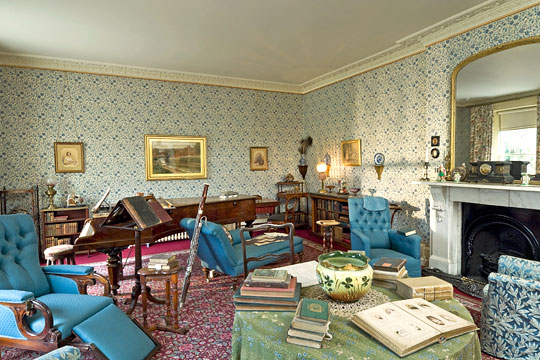Research on Down House
As home to one of history’s most celebrated scientists, Down House has aroused much interest from both scientists and social historians. That it has been a museum for so many years has contributed greatly to its position as one of the most authentic properties in the National Heritage Collection.

Down House as a Museum
Successive curators have provided a range of guidebooks to the site. These range from the simple inventory of contents produced under the first curator, Dr ORJ Howarth, to more detailed examinations of the house as a family home.
A key figure in the history of Down House museum publications was Sir Hedley Atkins, former president of the Royal College of Surgeons. He took a keen interest in the house in the 1970s and published a book entitled Down: Home of the Darwins in 1974.
When English Heritage assumed responsibility for the house in 1996, there followed a period of intensive research by English Heritage curators and architectural historians into the decorative schemes of the house during the Darwins’ tenure.
This research was supported by the 1929 reconstruction, analysis of paint samples and contemporary furnishing trends, and a substantial photographic archive both at Down House and in Cambridge University Library, with views of the house and grounds in various stages of development during the Darwins’ time there. This research informed the presentation of the ground-floor rooms when English Heritage reopened Down House to the public in 1998.
In the same year English Heritage began to restore the gardens to how they would have looked in Darwin’s time. This was made possible by the considerable research that has been undertaken into Darwin’s botanical experiments, notably by Professor David Kohn, and by wide-ranging research into Darwin’s life and work in the house and grounds by Darwin’s great-great-great grandson Randal Keynes.
Darwin Bicentenary
The bicentenary of the birth of Charles Darwin in 2009 provided the opportunity for reconsideration of the first-floor exhibition rooms, and to create a more informative display of original artefacts and manuscript material, together with new loans to Down House from Darwin’s descendants.
The exhibition now includes a handwritten page of the original manuscript of the Origin of Species which, together with Darwin’s diary and notebooks from his time on HMS Beagle, provides the most complete record of the development of his theory of natural selection.
English Heritage has also digitised the archive holdings at Down House. Visitors can access the contents of Darwin’s notebooks and manuscripts from the collection online, many of which are too fragile to display at the house.
Recent Darwin Studies
During the late 20th century many publications in the field of social science examined Darwin’s life and work. Also published were a new edition of his Beagle diary (1988), transcriptions of his notebooks, and new biographies, notably Darwin by Adrian Desmond and James Moore (1991).
The Darwin Correspondence Project, based at the University Library in Cambridge, is tackling his correspondence and publishing a 32-volume series, which will bring every aspect of Darwin’s life and work into focus for the 21st century.
The most recent volume, covering Darwin’s correspondence from 1870, was published in 2010. In addition, the Darwin Online project, begun in 2002, offers the most complete online resource of all Darwin’s publications, private letters, papers and supplementary works.
Questions for Future Research
While much of the structure and landscape of the house and grounds at Down House has been thoroughly investigated, the social history of Down House continues to raise interesting questions that need to be addressed:
- Beyond some very general assumptions, we know very little about how the first-floor rooms, which in Darwin’s day were bedrooms and studies, were used, or how were they decorated and furnished.
- In 1844 Darwin acquired a plot of land to the west of the house and planted a small orchard; then in 1881 he bought more land to extend the orchard further southwards. He knocked through an archway into the kitchen-garden wall and erected a brick ‘laboratory’ against the back wall of the greenhouse. Given his ill-health at this time, we do not know if he ever used the laboratory before he died, the following year.
READ MORE ABOUT DOWN HOUSE